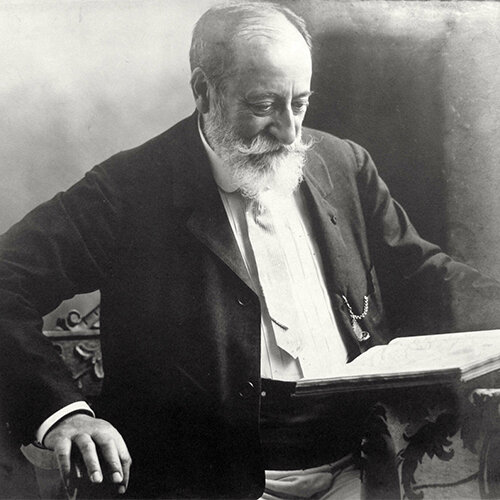The match between the French composer Camille Saint-Saëns and the Spanish violin virtuoso Pablo Sarasate was ideal – even when Sarasate didn’t play the premiere of a Saint-Saëns violin work, his light and nimble style was always there in the
Saint-Saens
Camille Saint-Saëns (1835-1921) made his piano recital debut at age 10, audaciously telling the audience that he would perform any one of Beethoven’s 32 piano sonatas as an encore. Liszt considered him as the greatest organist on earth. Over some
Approaching his 80th birthday, Camille Saint-Saëns was appointed by the French government as “First Delegate to the Franco-American Commission for the Development of Political, Economic, Literary, and Artistic Relations” for the 1915 Panama-Pacific Exposition in San Francisco. Organized to commemorate
The French choral movement known as the orphéons originated during the French Revolution. Within 15 years, the initiative was so popular that it led to the creation of the Paris Orphéon choral society, an organization eventually directed by Charles Gounod.
Camille Saint-Saëns was not a deeply religious man, and he certainly had “a repugnance for religious ceremonies.” On one occasion he even made arrangements for someone else to represent him at a baptism service where he was to become a
Suite in D Minor, Op. 16bis IV. Romance From SAINT-SAËNS, C.: Cello and Orchestra Works – Cello Concertos Nos. 1, 2 / Suite in D Minor / Romance (2017) Released by Naxos Saint-Saëns: Suite in D Minor, Op. 16bis –
Going against the grain of French musical life in the mid-19th century, Camille Saint-Saëns’ main love was instrumental music. Extraordinarily active in the field of chamber music, not only as a composer but also as a performer, he might rightfully
For a variety of extra-musical reasons, Camille Saint-Saëns has never been taken seriously as one of the great French composers of the late 19th-century. Historically informed, widely read in the French classics, religion, Latin, Greek, and acquiring a taste for







